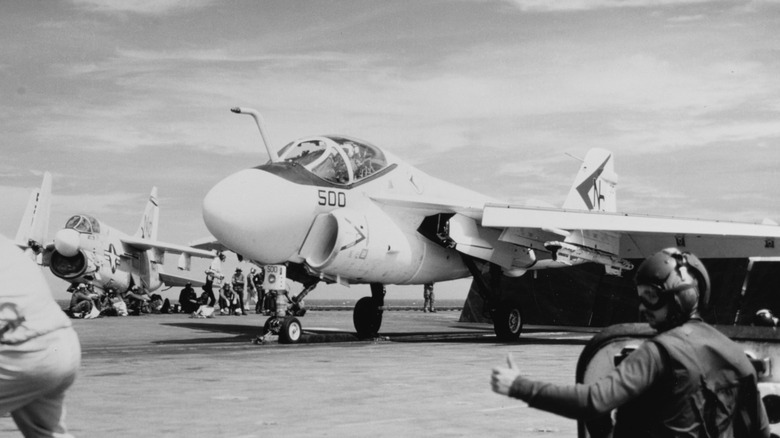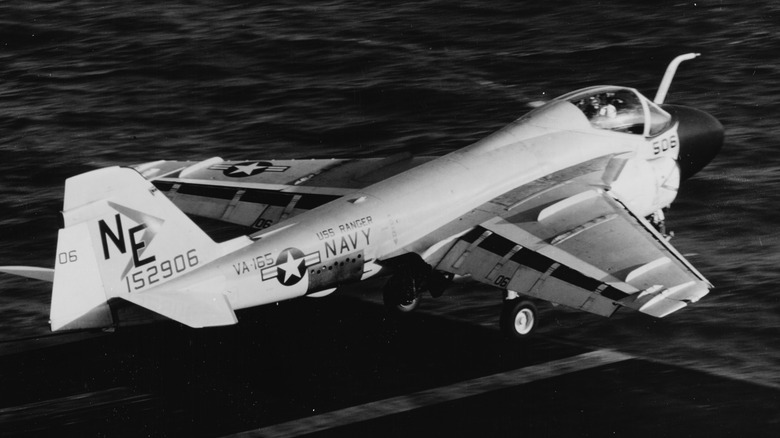The All-Weather Attack Bomber That Served In Vietnam's Harshest Conditions
Weather can have a huge negative impact on aerial combat. Dense clouds can obscure your view of the target and wind and rain can make it harder to fly steadily at certain altitudes. Prior to readily available night vision systems on attack aircraft, night operations could prove to be difficult. Entering service in 1962, the Grumman A-6 Intruder was made to fly at night, in bad weather, and more. According to the United States Navy, the A-6 was "the world's first fully all-weather attack bomber..."
The Vietnam War proved to be difficult to adapt to for U.S. forces as the terrain and weather of Southeast Asia could wreak havoc on less advanced aircraft. Occupying French forces had already been painfully aware of this fact during the early stages of the conflict after World War II. But the A-6 lived up to its "Intruder" namesake and was able to fly over enemy territory in North Vietnam under the cover of darkness or inclement weather with relative ease. The A-6 also had the added benefit of the ability to be launched from an aircraft carrier deck or a conventional airfield.
Fighting in the dead of night
The Intruder's two Pratt and Whitney turbojet engines integrated right into the fuselage of the aircraft gave it a bizarre appearance, compared to the sleek-looking F-105 Thunderchief jet. But the Intruder's job wasn't to act as a fighter jet, as it was often used as what's called a "pathfinder." Its all-weather prowess and advanced array of onboard optical sensors allowed it to scout out and find targets ahead of conventional strategic bombers or fighter jets.
North Vietnamese soldiers often utilized the tactics of asymmetrical warfare and small guerilla tactics against the much larger and better-equipped NATO forces. This would often include night operations. The A-6C, a Vietnam War-specific variant of the Intruder, could "see" enemy movement in near pitch-black conditions in the dead of night. According to the National Air and Space Museum, A-6s were used to knock out powerplants and strategic targets with such effectiveness and show of force that enemy soldiers thought squadrons of the much larger B-52 Stratofortress were attacking, when it was, in fact, two Intruders.
But its fancy sensors and rain boots don't mean that the A-6 couldn't pack a punch. In an attack bomber role, the A-6 could carry up to 18,000 pounds of payload, including air-to-ground missiles, a weapon that comes in handy when taking out surface-to-air missile (SAM) installations or anti-aircraft batteries. The A-6 flew all through the Vietnam War, Desert Storm, and operations in Bosnia before retiring for good in 1997. It was replaced in combat by the F/A-18 Hornet.

